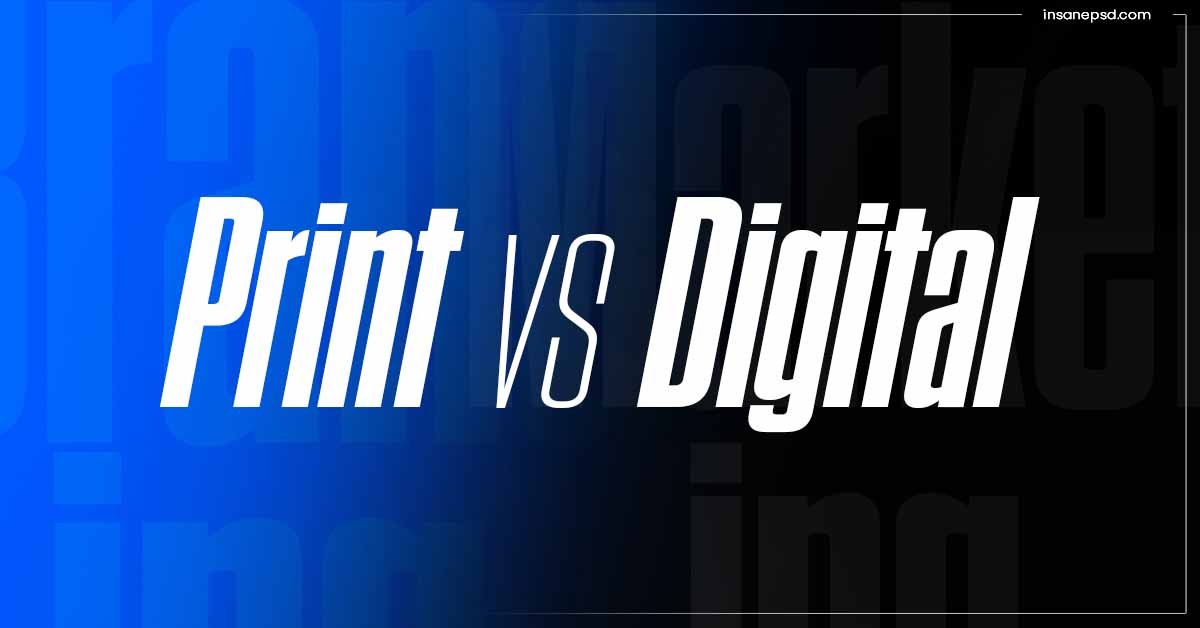I. Introduction
Designers today face a crucial decision when it comes to choosing the medium for their creations. The age-old debate between print and digital design has gained new significance in our dynamic technological landscape. This article aims to provide a comprehensive guide to help designers make informed decisions based on project requirements, client needs, and emerging trends.
A. The Evolution of Design Mediums
In the ever-changing world of design, traditional print, and modern digital mediums have coexisted, each offering unique advantages and challenges. Understanding the evolution of these mediums is crucial in making informed decisions.
B. Significance of Choosing the Right Medium
The choice between print and digital extends beyond personal preference; it directly influences the impact of a design on the audience. Delving into the specific advantages and drawbacks of each medium is essential for a holistic understanding.
II. Print Design Pros and Cons
A. Tangibility and Authenticity
Printed materials provide a tangible and authentic experience, engaging the senses in a way digital mediums often cannot. This section explores the emotional connection created through physical designs.
B. Design Flexibility
Print design allows for intricate details, diverse materials, and unique finishes. However, it comes with limitations, such as fixed layouts and costs, which designers need to consider.
C. Cost Considerations
While the tactile experience of print is unparalleled, the cost implications can be significant. Analyzing the budget constraints is crucial in deciding if print is the right medium for a particular project.
III. Digital Design Advantages and Drawbacks
A. Interactivity and Multimedia
Digital designs offer interactive elements, multimedia integration, and dynamic content. This section explores the enhanced user experience achievable through digital platforms.
B. Environmental Impact
As sustainability becomes a growing concern, digital design is often perceived as a more eco-friendly option. However, it comes with its own set of environmental challenges, such as electronic waste.
C. Technical Challenges
Navigating the technical aspects of digital design, including compatibility issues and evolving technologies, is vital for designers aiming to harness the full potential of digital mediums.
IV. Target Audience Analysis
A. Understanding Client Needs
Design choices should align with the needs and preferences of the target audience. Conducting a thorough analysis of client expectations ensures that the chosen medium effectively communicates the intended message.
B. Demographics and Preferences
Different demographics have varying preferences when it comes to engaging with designs. This section explores how understanding these preferences aids in medium selection.
V. Factors Influencing Medium Selection
A. Project Objectives
The objectives of a design project play a pivotal role in determining the most suitable medium. Whether it’s creating brand awareness, promoting products, or conveying information, the medium should align with the project’s goals.
B. Budget Constraints
Practical considerations, such as budget constraints, influence the decision-making process. Balancing creative aspirations with financial limitations ensures a realistic approach to design.
C. Brand Identity
Maintaining brand consistency across mediums is essential for building a strong and recognizable brand identity. This section emphasizes the role of design mediums in shaping brand perception.
VI. Balancing Print and Digital in Design
A. Hybrid Approaches
Rather than choosing between print and digital, designers can adopt hybrid approaches that leverage the strengths of both mediums. This section explores how hybrid designs offer the best of both worlds.
B. Consistency Across Mediums
Maintaining a consistent visual language across print and digital mediums is crucial for brand coherence. Case studies exemplify successful implementations of a cohesive design strategy.
C. Case Studies
Examining real-world examples provides valuable insights into how leading brands navigate the complexities of design medium selection. Case studies showcase the effectiveness of strategic decisions in achieving design goals.
VII. Future Trends in Design Mediums
A. Emerging Technologies
The design landscape is constantly evolving, with emerging technologies shaping new possibilities. Exploring these trends prepares designers for the future challenges and opportunities in the field.
B. Sustainability in Design
As environmental concerns rise, the article explores how sustainability becomes an integral factor in design medium selection. The evolving role of designers in creating eco-conscious designs is highlighted.
VIII. Conclusion
In conclusion, the choice between print and digital design is not a binary decision but a strategic one. Designers must consider various factors, including project objectives, budget constraints, and target audience preferences, to make informed choices. As technology evolves, embracing hybrid approaches and staying attuned to emerging trends will be key in creating impactful and sustainable designs.
FAQs
- Is print or digital design more cost-effective? Both mediums have their cost considerations. Print may incur higher production costs, while digital design might involve ongoing technical expenses.
- How can designers balance brand consistency across different mediums? Maintaining a consistent visual language, color palette, and typography is crucial. Case studies in the article provide insights into successful brand consistency.
- What are the future trends in design mediums? Emerging technologies and a growing emphasis on sustainability are shaping the future trends in design. The article highlights these evolving aspects.
- Are there any environmental considerations when choosing a design medium? Yes, both print and digital design have environmental implications. The article delves into the environmental impact of each medium.
- Can hybrid design approaches be applied to any project? Hybrid design approaches can be adapted to various projects, offering a flexible and balanced solution. The article explores the benefits of this approach.
